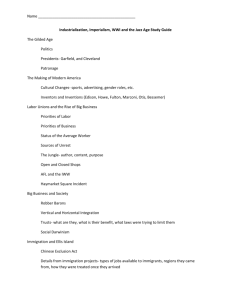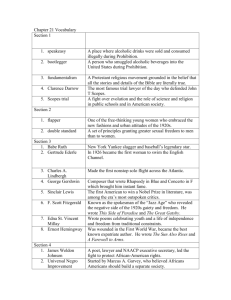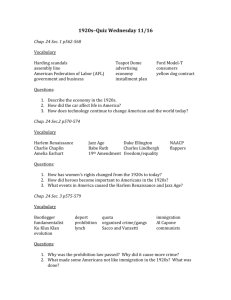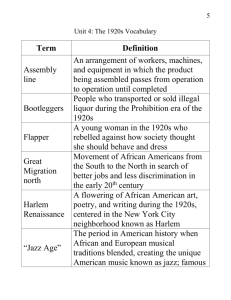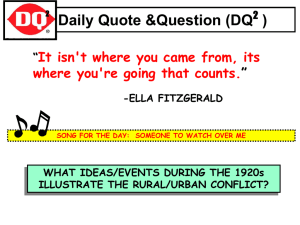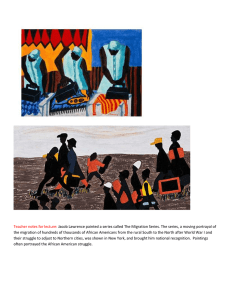The Jazz Age - pams
advertisement
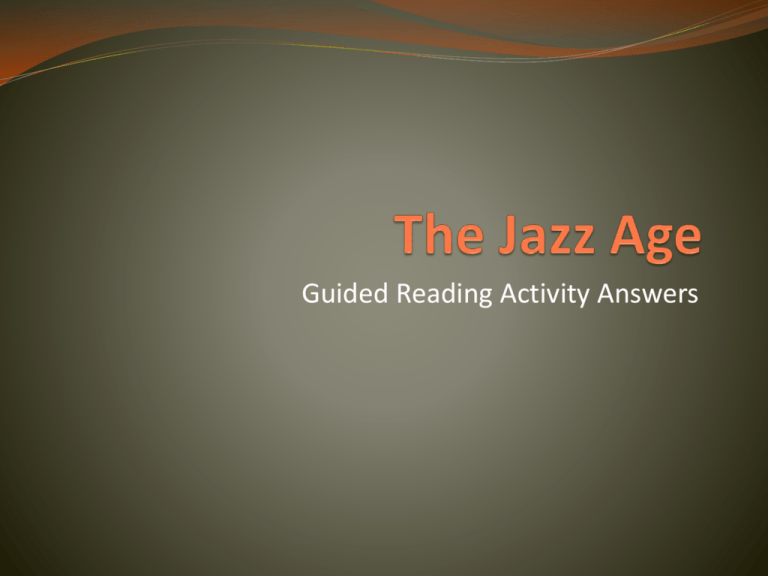
Guided Reading Activity Answers The Charleston Sweeps the Nation And that was just the beginning. In quick succession, dances like the Lindy Hop, the Black Bottom, and the Breakaway all came and went as the most fashionable dances. Crazy fads like flag pole sitting, marathon dance competitions, and mahjongg spread from coast to coast. And occasionally, people decided that teaching their pet monkeys to dance the Charleston seemed like a pretty good idea, too. George Herman “Babe” Ruth The Sultan of Swat smashed 7114 homeruns during his career. Originally a pitcher for the Boston Red Sox, he was sold to the New York Yankees in 1919 – and went on to win seven pennants and four World Series during his time in Yankee Stadium – “The House that Ruth Built!” Charles Lindbergh – “Lucky Lindy” Jazz Jazz music is defined as a musical form which combined the rhythms from West Africa and the Caribbean, work chants and spirituals from slaves and sharecroppers in the rural South, an the harmonies from Europeans styles of music into a new form. It is a distinctly American form of music – and an AfricanAmerican form of music at that – which was brought into popularity during the 1920s. Jazz was created in the South, and particularly in New Orleans, LA. New Orleans Jazz Festival Louis Armstrong Jazz Musicians of the 1920s Bessie Smith Duke Ellington George Gershwin George Gershwin was perhaps the most beloved composer of the 1920s and 1930s. While his pop music was probably most well known, he was also a classical composer and accomplished as both a performer and an entertainer. Some of his greatest hits include: Strike Up the Band I Got Rhythm Funny Face He died of a brain tumor in 1937 at the young age of 39. Aaron Copland Aaron Copland was a composer of the 1920s and beyond who was strongly influenced by Jazz but eventually found his own niche in the American musical spectrum. He was bald and rather feeble looking by the height of his popularity, but his music spoke for him. His most famous scores, soundtracks, and songs include: Fanfare for the Common Man Billy the Kid (a ballet) The Red Pony Copland began his career in the 1920s, but was much more productive during the 1930s and 1940s. F. Scott Fitzgerald Fitzgerald, like many of the “Lost Generation” of American authors, was a critic of the empty lives led by wealthy Americans during the 1920s. Many of these young and influential authors found Americans to be hypocritical in their daily lives – banning alcohol by Prohibition, but visiting speakeasies – claiming to be virtuous Christians, but never visiting a church – the list went on and on. Fitzgerald himself led a very dubious sort of lifestyle – perhaps he was the hypocrite... Ernest Hemingway, American Literature’s 20th Century Standard Bearer The Sun Also Rises A Moveable Feast The Harlem Renaissance The Harlem Renaissance was a literary movement which took place in Harlem, a New York City neighborhood during the 1920s. AfricanAmerican poets, authors, playwrights, artists, musicians, and actors found a forum for self expression through their various arts. In doing so, the black community in the United States was able to find a literary and artistic voice to express their own unique experiences as Americans. Langston Hughes I, Too, Sing America by Langston Hughes I, too, sing America. I am the darker brother. They send me to eat in the kitchen When company comes, But I laugh, And eat well, And grow strong. Tomorrow, I'll be at the table When company comes. Nobody'll dare Say to me, "Eat in the kitchen," Then. Besides, They'll see how beautiful I am And be ashamed-I, too, am America.




